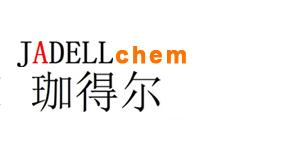Recombinant Human Osteoprotegerin是 NF-κB 配体的受体活化剂的诱饵受体。它属于 TNF 受体家族。
Synonyms
rHuOPG; Tumor necrosis factor receptor superfamily member 11B; TNFRSF11B; OCIF
Species
HumanSource
CHO Accession
O00300 Gene ID
4982 Molecular Weight
Approximately 20.7 kDa AA Sequence
ETFPPKYLHY DEETSHQLLC DKCPPGTYLK QHCTAKWKTV CAPCPDHYYT DSWHTSDECL YCSPVCKELQ YVKQECNRTH NRVCECKEGR YLEIEFCLKH RSCPPGFGVV QAGTPERNTV CKRCPDGFFS NETSSKAPCR KHTNCSVFGL LLTQKGNATH DNICSGNSES TQKCGIDVTL Appearance
Lyophilized powder. Formulation
Lyophilized after extensive dialysis against PBS, pH 7.4. Endotoxin Level
<1 EU/μg, determined by LAL method. Reconstitution
Reconstitute the lyophilized recombinant Human Osteoprotegerin (rHuOPG) to 100 µg/mL using ddH2O. Storage & Stability
Lyophilized recombinant Human Osteoprotegerin (rHuOPG) is stored at -20°C. After reconstitution, it is stable at 4°C for 1 week or -20°C for longer. It is recommended to freeze aliquots at -20°C or -80°C for extended storage. Shipping
Room temperature in continental US; may vary elsewhere. Background
Recombinant Human Osteoprotegerin can act as a soluble factor in the regulation of bone mass. It inhibits osteoclast maturation and protects bone from both normal osteoclast remodeling and ovariectomy-associated bone loss[1]. Osteoprotegerin acts as a decoy receptor, binding to RANKL and blocking its interaction with RANK, inhibiting osteoclast development[2]. Osteoprotegerin can promote cell survival, cell proliferation and facilitates migration by binding TNF-related apoptosis inducing ligand (TRAIL), glycosaminoglycans or proteoglycans. A large number of in vitro, pre-clinical and clinical studies provide evidences of Osteoprotegerin involvement in vascular, bone, immune and tumor biology[3]. |



